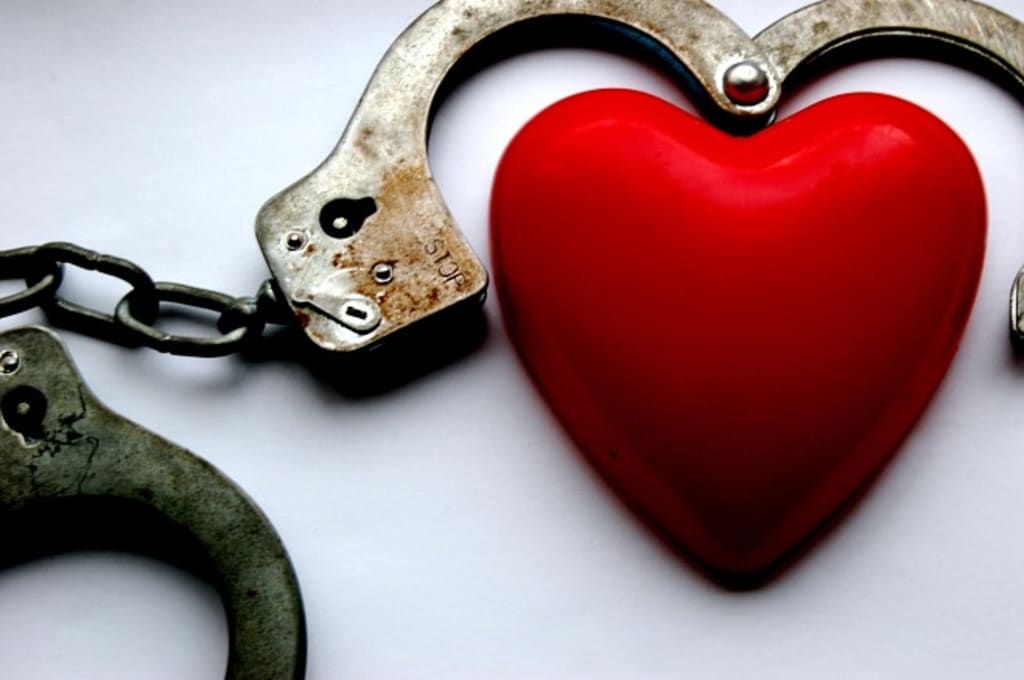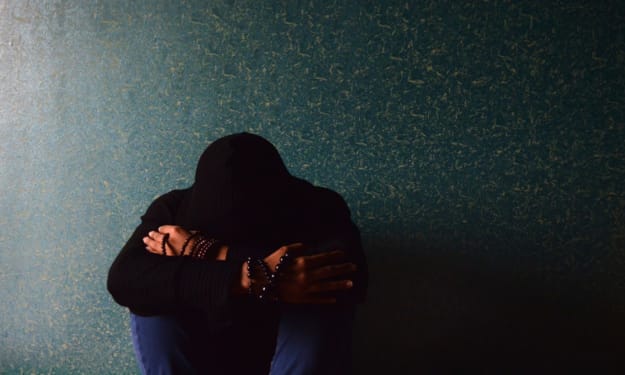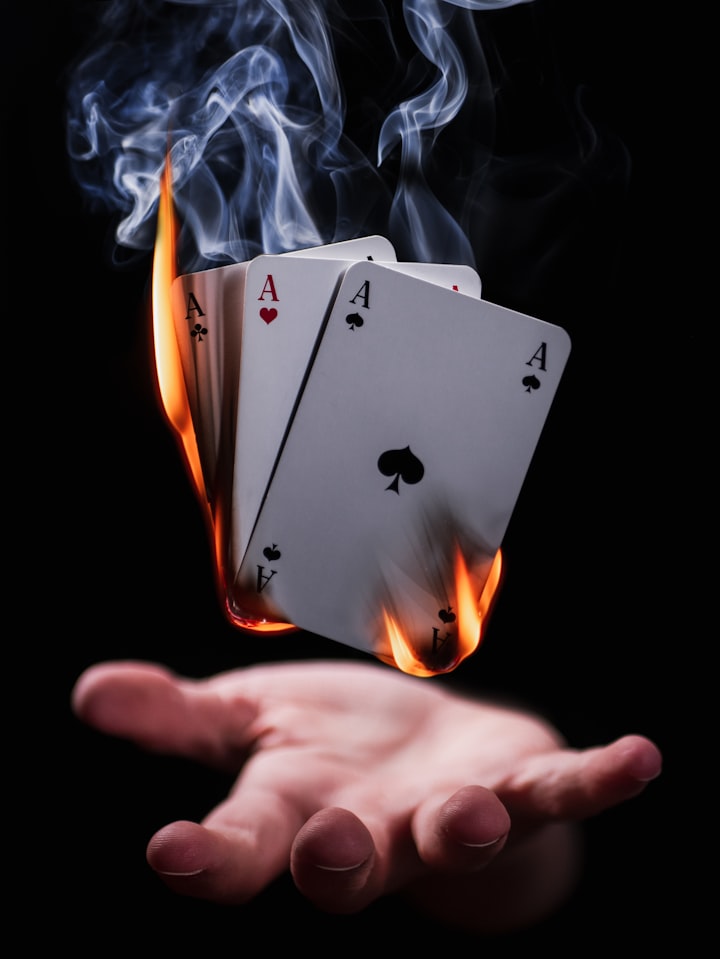Love Hurts
We never discuss the most important reason for staying.

When we talk about domestic abuse, we miss one of the most important factors—love. We frame the argument in more rational terms, e.g. when we believe the victim only stays for practical reasons. We feel it must be because of lack of resources, or isolation, or logistics. At worst, they might remain through fear, compliance, or learned helplessness. But that’s only part of the problem. All of these reasons are valid ones, but by concentrating only on the practical, we’re only seeing part of the picture, and we’re letting survivors down.
Why do victims return, again and again, to abusive partners? If there were good and rational reasons to leave, why would they go back? This is usually the point where friends and relatives get frustrated with a victim and blame them or cut off help—but this is when they need it the most. Practical assistance is necessary, but so is emotional support. Acknowledging a victim’s feelings and talking about them can help them come to terms with what’s really going on—and provides an outside perspective that they are unable to see.
When I was in an abusive relationship, the advice and support I was given by both friends and support services was focussed on the notion that this was a practical problem to solve, whereas the emotional barrier that I could not cross was the bigger issue for me. And people became frustrated with me, I became frustrated with myself, and I became even more isolated because people no longer wanted to "help" me. I wouldn’t play by their rules and they lost patience with me.
Strangely, I believed that maybe the abuse actually wasn’t that bad because I "chose" to stay. Internalising those messages about how I “should” leave actually made it harder for me to do so because I doubted my own sanity—as victims in an abuse situation have been primed to do anyway.
The hallmark of an abusive relationship isn’t the violence or the bruises, but the psychological element. Domestic abuse is a strategy employed to control a partner, not the result of an argument gone physical. Abusers all employ similar strategies to confuse and weaken their target, and to create dependence. Abusers can appear loving at times, to flood the victim with affection or as small tidbits of love that they must "work" for. Abusers are highly manipulative, and can distort a victim’s perception of reality. In such an environment, the abuser becomes the only "safe" option, the only one that can help them navigate a confusing world.
Cut off from the outside world and sources of support, the abuser has the victim’s complete attention. The victim is only allowed to see what the perpetrator wants them to, and all of their decisions and emotional reactions happen in a vacuum. Their self-esteem and confidence will take a huge knock, causing them to consider themselves lucky for having such a "dedicated" partner. The victim experiences intense love for their partner based on the set of conditions the abuser has created—it is not a genuine loving relationship, but the victims feels that it is.
This love is a form of trauma bonding, also known as Stockholm Syndrome. It is a self-defense mechanism that comes instinctively when in an ongoing abuse situation. It ensures the victim’s survival, and it is not something that can be controlled. Subconsciously, the victim wants to keep the abuser on “their side,” even though in reality nothing that the victim says or does will pacify the abusive partner. We cannot choose who we fall in love with, and we rarely seek to understand the mechanism. It’s something that just is.
We only seek to query love if we feel there’s something not right, as in the case of someone loving their abuser. But we’re seeing it from a different perspective to those who are actually living it. Love is an extremely powerful emotion, and it can make us do things that seem reckless and silly. Abusers know this and will manipulate their target’s emotions to keep them under control. For the victim, it can feel like they’re under a spell, knowing that they are experiencing harm, but also feeling a compulsion to remain in the harmful situation. This is all psychological stuff going on in the background, not a conscious choice.
If you’ve already been in an abusive relationship and haven’t had the opportunity to analyse the mechanisms and your own internal thought processes, it’s very easy to end up back in another abusive relationship, or even back in the same relationship. This isn’t because victims are foolish, or damaged, it is a result of the conditioning they’ve been exposed to. So-called bad boys might be abusive, but there’s the perception that they will be tough enough to protect you. This is because you've been brainwashed to think that you need protecting and could not survive on your own.
There’s also a sense of familiarity. If all you’ve known is abuse, it’s very easy to be drawn to more abuse, because even though it is dangerous, it feels safe. If there’s unresolved trauma from your past, you may be reliving it as a subconscious attempt at healing, although it will actually prevent you from moving on. The intensity of the emotion drives the behaviour. It’s easy to manipulate someone into staying, coming back, not testifying against them. And it’s not always through intimidation, love is powerful enough by itself. That love might be the only type of love a victim has experienced, and so they return to it.
Related to the case that gave Stockholm Syndrome its name (a hostage scenario), abusive relationships tend to follow similar patterns, and research has been conducted on the similarities in the methods of abusers & hostage-takers, and the reactions of abused partners & hostages. As well as acknowledging the role of trauma bonding, comparisons have been discovered between psychological torture methods used against prisoners of war, and against victims of domestic abuse.
When I first studied the link between domestic abuse and Stockholm Syndrome, it felt like a huge weight had been lifted off my shoulders. Now I had an explanation for my behaviour and beliefs, in addition to recognising the methods my abuser had used against me. I read the texts, took notes in the lectures, and realised this is me. After all this time, having left and experienced the full gamut of human emotion yet never resolving anything, I finally had an answer.
If you’d told me this while I was in that relationship, I probably wouldn’t have listened to you. I’d have felt patronised, or that you were trying to psychoanalyse me to make yourself look good by putting me down. That’s one of the self-defense mechanisms victims exhibit as well— turning their back on sources of help as they threaten the fantasy of the relationship. Unfortunately, they need to come to the realisation themselves that it’s abuse and not love.
That’s difficult. It’s not simply a matter of accepting the facts and moving on. The victim has invested time, emotion and resources into this relationship, making it more likely that they will resist and convince themselves that they should stay. Admitting that you’ve been deceived and devoted so much to a person that just wanted to harm and control you is painful. Your brain wants to protect you from this reality, so it tries to convince you that it isn’t all a lie, that it’s real and that you are in love.
For somebody that has never experienced domestic abuse, it is easy to make assumptions based on what they think victims are, or should be. But victims often behave in ways that seem like the opposite of what we would expect. This can lead us to judge and discredit those who really need our help. It’s on us to educate ourselves and to see the world through more perspectives than just our own.
Love is something that happens out of our control anyway, but this sort of love is artificially controlled by the abuser. When you’re in it, you don’t know it, and if you escape it without understanding what it was, you’re likely to end up back in a similarly abusive relationship. It can be infuriating to watch, and very easy to blame the victim of this pattern of abuse. Viewing it from the angle of “well, I wouldn’t put up with that” or “how can they possibly love someone who treats them so badly” oversimplifies the problem. It’s not as easy as stepping out of the situation and seeing that it is actually toxic. For the victim in the middle of it, it’s impossible to look at the relationship objectively.
Those affected by domestic abuse can seem like a pain in the neck, and can behave in ways that are not in their best interests. But their view of the world is distorted, and the love they feel for their abuser is real for them. Ignoring the role of emotion in rational decision-making allows us to tell ourselves that victims who stay are weak, unreliable and sketchy—transferring the blame from abuser to victim. It also gives us a free pass: if victims ignore our advice and offers of help, then they’re obviously in control and we don’t need to do anything.
Anyone who’s been in love, or yearned for something, knows how strong that pull is. If we experienced setbacks in our pursuit of love, we might make a poor decision in order to get closer to what we want. In a domestic abuse situation, the victim has less agency. Their experience is manipulated from the outside, and they are less able to tell if their choices & behaviour are appropriate. The best thing we can do is to listen to victims, and be there for them even when they seem to let us and themselves down. Understanding and accepting the role of love in an abusive relationship is hard, but it’s the only way we can empathise with those who stay, or keep on going back.
About the Creator
Katy Preen
Research scientist, author & artist based in Manchester, UK. Strident feminist, SJW, proudly working-class.






Comments
There are no comments for this story
Be the first to respond and start the conversation.